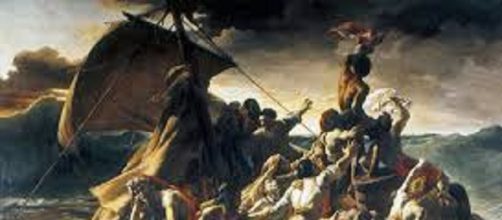Banksy has never been one to shy away from controversy but his recent work at the Calais migrant camp known as the 'Jungle' tackles the migration issue on an impressive level. A series of artwork was created across the concrete walls of the campsite, a donation of wood and other materials was made to aid those living there and he also made a rare statement about his intentions.
Banksy, whose identity is still not publicly known, has used the migration crisis in his work before and the breadth of his work in Calais shows his strong intentions to really get his pro-migration message across.
His “theme park” Dismaland included an exhibit where the typical sideshow game of motorised boats was given a twist with fleeing refugees. The short-term Western-Super-Mare attraction has since been dismantled but the artist has not let the work or the parts go to waste, with woods and other elements being donated to the camp during his visit.
Can the Steve Jobs image make an impact?
While gestures of goodwill are heartwarming at a time when xenophobic views appear to be on the rise and headlines focus so strongly on extreme anti-Muslim sentiments from figures like Donald Trump, the element of Bansky's work that will always get the most attention is the artwork. Here he created a series of pieces to shed light on the plight of the migrants and two are sure to capture the public's interest thanks to their message and the skill involved.
The first is a monotone tribute to Gericault's 'Raft of the Medusa', with a raft of migrants waving at a luxury yacht; the second is the image of Steve Jobs in his trademark outfit, carrying a sack full of possessions and an old Apple computer as though he is off to start a better life in America.
Banksy rarely speaks out about his work, seeming to prefer to let the images do the talking but here he gave a strong statement on the worth of migrants. He said "We're often led to believe migration is a drain on the country's resources but Steve Jobs was the son of a Syrian migrant. Apple is the world's most profitable company, it pays over $7 billion (£4.6 billion) a year in taxes – and it only exists because they allowed in a young man from Homs." The idea that the iPhone, which many people will view these images on, is the product of migration may provide the alternative viewpoint that has been missing.

